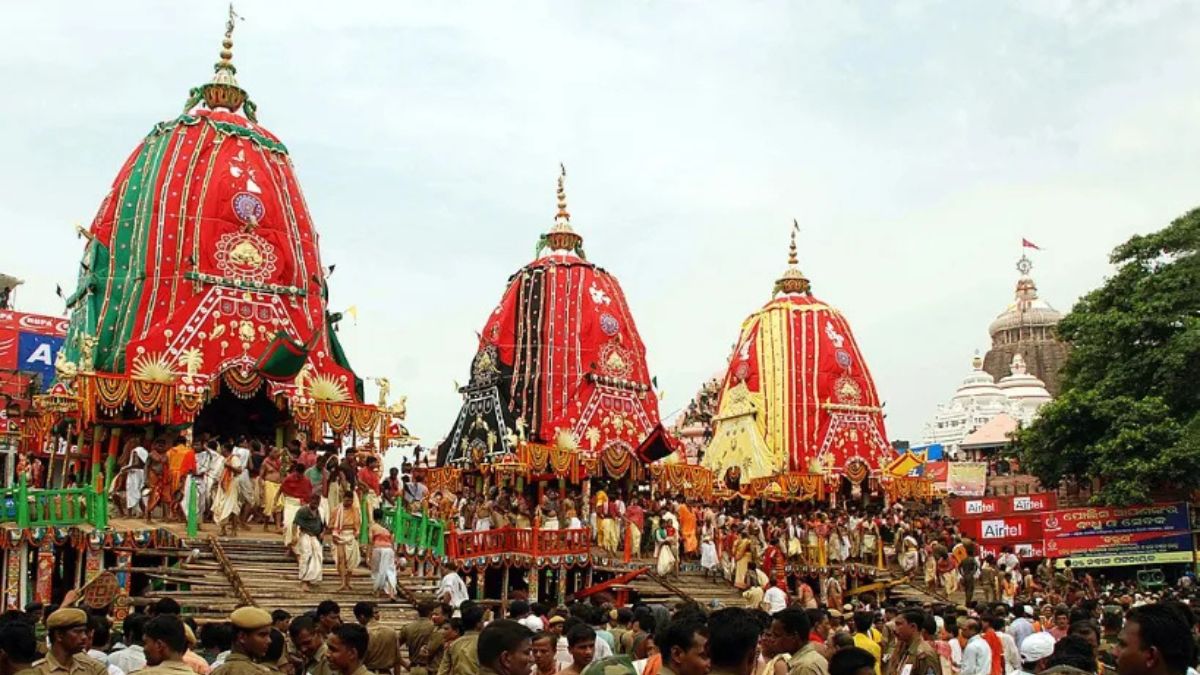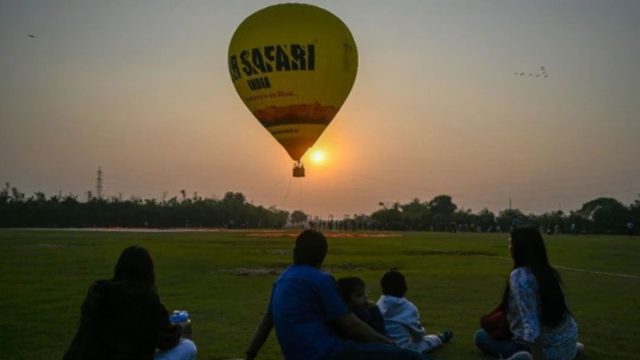Rathyatra, often referred to as the Jagannath Rathyatra, is one of the most iconic and spiritually charged festivals in India, celebrated with unmatched devotion and grandeur. Originating from Puri in Odisha, this annual chariot procession is dedicated to Lord Jagannath, an incarnation of Lord Krishna, along with his siblings Balabhadra and Subhadra. Unlike temple rituals confined to inner sanctums, Rathyatra uniquely brings the deities out into the open, allowing millions of devotees, including those normally not permitted inside temples, to participate in the divine celebration.
Held during the month of Ashadha (June–July), the festival sees massive wooden chariots pulled by devotees through the streets of Puri as chants of “Jai Jagannath” fill the air. Beyond its religious roots, Rathyatra embodies cultural unity, communal harmony, and spiritual inclusion. The spectacle is so impactful that its observance has now spread globally, with processions held in major cities around the world.
Historical Origins of Rathyatra and the Legend of Jagannath’s Journey
Rathyatra, also known as the Jagannath Rathyatra, is one of the oldest and most celebrated Hindu festivals in India, with roots tracing back to the 12th century in Puri, Odisha. The word Rathyatra is derived from Sanskrit, where Rath means chariot and Yatra means journey. The festival commemorates the annual visit of Lord Jagannath (an incarnation of Krishna), along with his siblings Balabhadra and Subhadra, from the Jagannath Temple to the Gundicha Temple, located around 3 km away.
According to mythology, the journey symbolizes Krishna’s visit to Vrindavan. The deities are taken on elaborately carved wooden chariots, reminiscent of royal processions, drawing millions of devotees annually. The first documented Rathyatra is believed to have been held during King Anantavarman Chodaganga’s reign in the 12th century.
Rathyatra Rituals in Jagannath Puri: From Snana Purnima to Bahuda Yatra
The Rathyatra festival in Puri is not just a single-day event—it is a complex sequence of sacred rituals spanning weeks:
- Snana Purnima: Held about two weeks before the Rathyatra, this involves the ceremonial bathing of the deities with 108 pots of water, followed by a period of Anavasara (hibernation), where the deities are hidden from public view.
- Rath Construction: Each year, three new chariots are built using sacred neem wood, following strict architectural guidelines: Nandighosa (Jagannath), Taladhwaja (Balabhadra), and Darpadalana (Subhadra).
- Main Procession (Rathyatra): On the second day of the lunar month of Ashadha (June–July), the deities are placed on their respective chariots and pulled by devotees using thick ropes. This is considered a highly auspicious act.
- Gundicha Temple Stay: The deities stay for seven days at the Gundicha Temple, symbolizing their maternal aunt’s home.
- Bahuda Yatra (Return Journey): On the ninth day, the return procession begins, concluding with the Suna Besha, where the deities are dressed in gold ornaments before re-entering the Jagannath Temple.
Rathyatra 2025 Date and Timings: Important Calendar Details
For 2025, Rathyatra falls on Friday, 27 June 2025. The chariot pulling begins early in the morning, post the Pahandi (ceremonial procession of the deities to their chariots). Devotees often line up as early as 3–4 AM to witness the rituals.
Key Dates:
- Snana Purnima: 12 June 2025
- Rathyatra: 27 June 2025
- Bahuda Yatra: 4 July 2025
- Suna Besha: 5 July 2025
- Niladri Bije (Re-entry to Jagannath Temple): 6 July 2025
Why Rathyatra Is Spiritually Important for Devotees of Lord Jagannath
Rathyatra is not just a ritualistic journey; it carries deep spiritual significance. Lord Jagannath’s journey represents the divine outreach of God from the sanctum (temple) to the masses—breaking barriers of caste, creed, and class. The act of pulling the chariot ropes is seen as a symbol of surrender, where devotees offer themselves in the service of the divine.
Furthermore, Jagannath’s open darshan (public view) during the yatra is the only time in the year when the deities come outside the temple, allowing those barred from temple entry (like non-Hindus and foreigners) to receive darshan and blessings.
Rathyatra is not merely a religious event but a moving expression of devotion, inclusion, tradition, and cultural unity. It connects millions to the divine in a personal and communal way. Whether witnessed in the vibrant streets of Puri or in the heart of a foreign metropolis, the spirit of Rathyatra transcends borders, reminding us of the timeless journey of the soul towards God.




